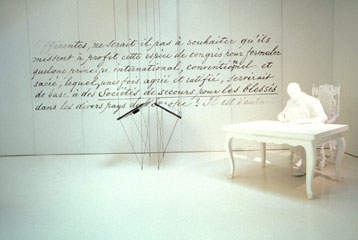Henri Dunant, a humanitarian citizen of Geneva.
Henri Dunant was born into a Calvinist family in Geneva in 1828. He did not complete secondary school, instead taking an apprenticeship in a local bank. Then in 1853, he travelled to Algeria and joined the Compagnie genevoise des colonies suisses in Sétif. He founded a colonial company in 1856 but was not granted all the authorisations necessary to operate it. After returning to Geneva, he attempted to reach out to Napoleon III to talk to him about his business. The Emperor was directing the Franco-Sardinian troops fighting the Austrians in northern Italy. Henri Dunant decided to meet him in the field. And that is how he witnessed the sad sight of the battle of Solferino.
The battle of Solferino – the starting point of the Red Cross
Confronted by the horrors of the battle of Solferino, Henri Dunant was deeply affected by the atrocious conditions that awaited wounded soldiers. Sensitive to their suffering, he volunteered to provide first aid, regardless of the country of origin of the combatants.
Three years later, back in the city of his birth, Dunant published “Un Souvenir de Solférino” (A Memory of Solferino). In this manifesto, he called for an international agreement to be signed guaranteeing the protection of victims of armed conflicts. A visionary, he also proposed that all countries should organise aid societies which would provide trained volunteers to care for the war-wounded.
To put his ideas into practice, Dunant called on the support of Gustave Moynier, President of one of the leading public welfare organisations in Geneva: the Geneva Society for Public Welfare. Thanks to this valuable aid, the “Comité international et permanent de secours aux militaires blessés en temps de guerre” was born in 1863.
The Red Cross and Red Crescent Movement today
Since its first global mission in 1864 during the conflict between Denmark, Prussia and Austria concerning two duchies located on the Danish-German border, the International Committee on the Red Cross (ICRC) has faced numerous challenges. While World War One enabled the ICRC to extend its scope of action, World War Two almost cut its funding off entirely. It was not until the 1990s that it once again received the generous support of governments and the European Commission.
Today, the Red Cross and Red Crescent Movement consists of the International Committee on the Red Cross (ICRC) based in Geneva, the International Federation of the Red Cross and Red Crescent, which also has its headquarters in our city, and the national societies present in 186 countries.
To explain their activities in a nutshell, the ICRC intervenes in the event of war to protect the victims and provide them with assistance while the Federation and the national societies provide aid in times of peace: natural catastrophes, social integration, healthcare actions, etc.
Geneva, headquarters of humanitarian action: a destiny already laid out?
From the end of the Middle Ages, the city was already characterised by a certain cosmopolitanism, in particular through the fairs and trade. These characteristics of the City of Geneva could be seen from the Reformation and during the Protestant refuge.
In other words, apart from the fact that Henri Dunant was born in Geneva and that the founders of the Red Cross organised the first conferences in Geneva in October 1863, the city becoming the headquarters of humanitarian action would not appear to have been a question of chance but was more down to its singular history characterised by all types of international exchange.
Article modifié le 17.08.2023 à 10:42

